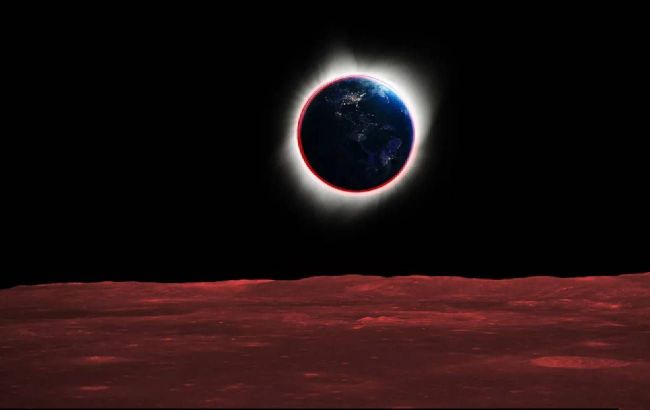How solar eclipse looks from Moon: Unique footage captured by NASA
 What a solar eclipse looks like from the moon (photo: NASA)
What a solar eclipse looks like from the moon (photo: NASA)
This weekend, on March 25th, there will be a lunar eclipse, and less than three weeks later, on April 8th, a solar eclipse will occur. While many of us have witnessed such astronomical phenomena, many are curious to imagine what a solar eclipse would look like if observed from the Moon.
RBC-Ukraine reports on how a solar eclipse appears from the Moon, according to IFLScience.
How a solar eclipse looks from the Moon
A lunar eclipse for us becomes a solar eclipse for the Moon. Let's imagine you're on the Moon; accordingly, Earth is obscuring the Sun.
From the Moon or space in general, a solar eclipse appears as a dark spot moving across Earth's surface at a speed of approximately 2400 kilometers per hour.
If you were on the Moon during a solar eclipse, you wouldn't notice a significant difference: the near side of the Moon would remain in its 14-day night cycle, while on Earth, a light shadow would traverse the seas and landmasses of our planet.

The NASA Surveyor 3 spacecraft captured a total solar eclipse on April 24, 1967, from the Moon. (Photo: NASA)
The next total lunar eclipse will occur in March of next year, followed by another one in September. Interestingly, during that time, NASA astronauts are scheduled to be in orbit around the Moon. Although the astronauts do not plan to land on this mission, it would be advantageous for them to be in lunar orbit during the eclipse.
Another great opportunity to witness an eclipse from the Moon will be on December 31, 2028.

In 2012, NASA astronaut Don Pettit captured a total solar eclipse from the International Space Station. (Photo: NASA)
Also, read about the upcoming eclipse corridor and the retrograde of Mercury in spring 2024.
Previously, we discussed the potential threat to humanity posed by the 300-meter asteroid Apophis, which will approach Earth on Friday the 13th.

